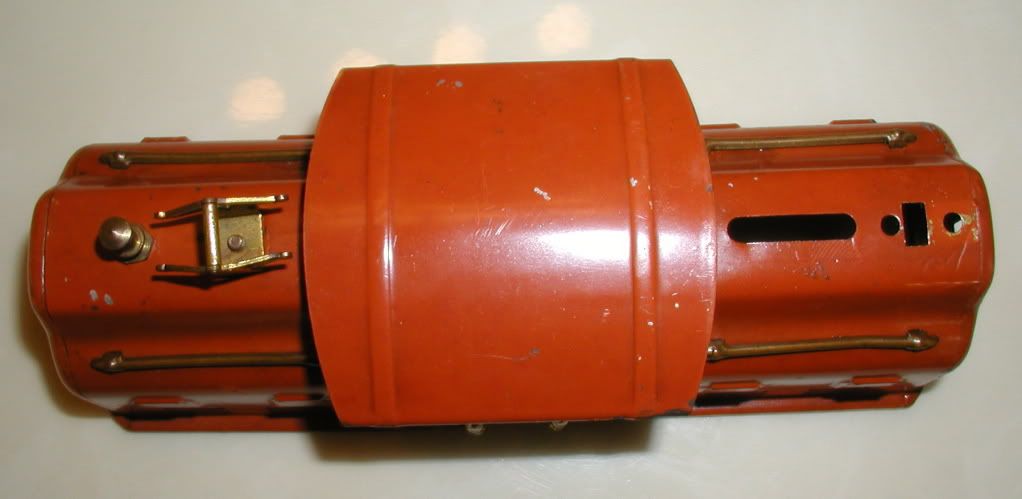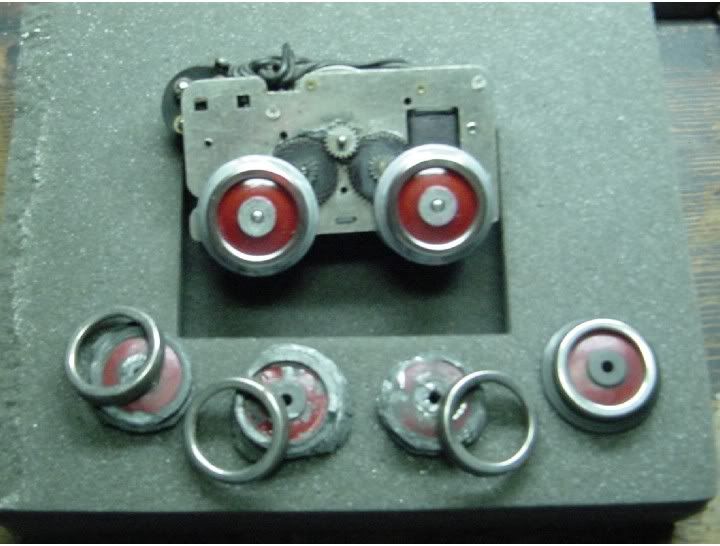I inherited my father's 252 and three passenger cars. It was pretty far gone -- it hadn't run since the first time I saw it, back in the early Fifties. The pantograph and whistle were missing, as was the headlight. And when I inherited it two years ago, the wheels had succumbed to the dreaded Zinc Rot and were crumbling away. One coupler was missing on the locomotive and one car, and one car had no couplers at all.
I got in touch with Jeff Kane at The Train Tender, and ordered the parts I needed, including reproduction wheels. Getting the old wheels off was no problem -- they crumbled away in my hands. Putting the new ones on was mostly a matter of making sure they were perfectly parallel as I squeezed them onto the axles in a vise. The gears on the back of the new wheels were a bit loose so I used a center punch to dimple the wheels and hold their gears tightly.
I discovered that the reason it had never run was that one of the brushes was missing from its proper place, and had jammed inside the motor housing. I shook it loose and put it aside. Then I thoroughly cleaned all the moving parts and replaced several wires whose insulation was hard and cracking. I replaced the brush, applied power, and away it went, for the first time in my lifetime.
I chose not to try repainting it. It really wasn't that badly dinged up to begin with, and I wanted to keep it as original as possible. So I settled for a good exterior cleaning and an application of some top-grade automotive wax. I installed the new couplers on cars and locomotive, attached the trim and headlight, and wired it up properly. It runs like a champ, now. Here's what it looks like:

Unfortunately, my father didn't live long enough to see it run anew. But I'd like to think that he drops in from time to time, and likes what he sees.


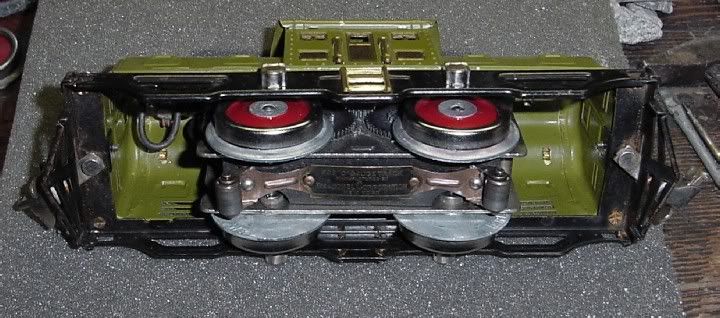
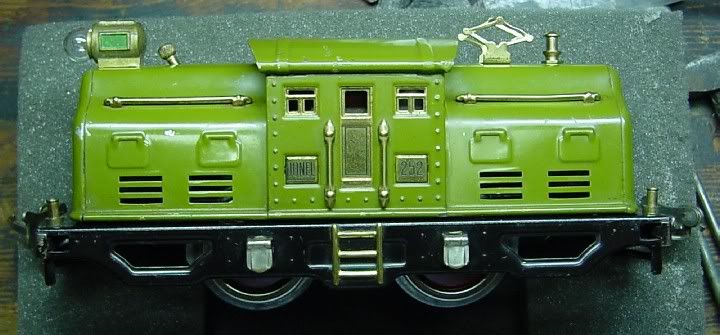
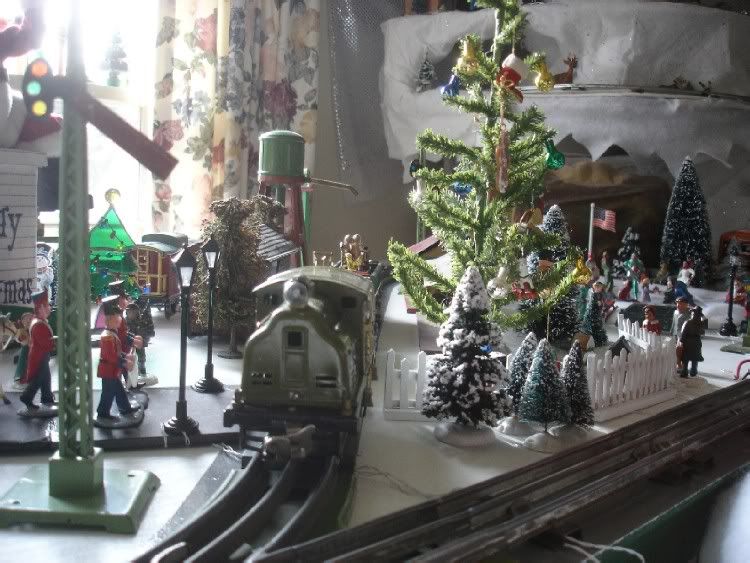


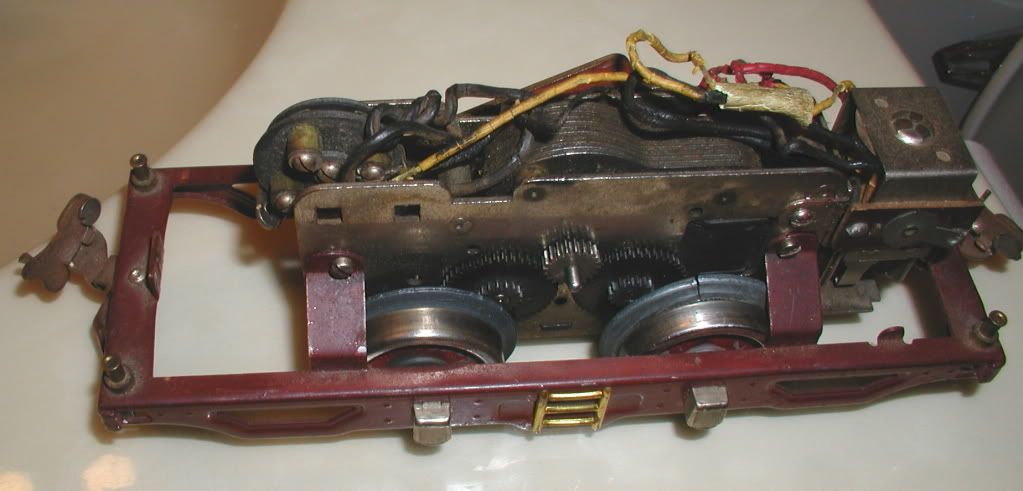 [/IMG]
[/IMG] [/IMG]
[/IMG]